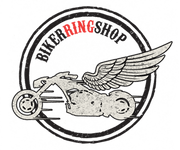The sign of a skull with crossed bones is associated with a prohibition, danger, or a border that one should not cross. In general, various attributes of death, such as bones, skeletons, and skulls, cause negative emotions. Therefore, ornaments with skulls are normally worn by tough men to emphasize their brutality, strength, and fearlessness.
But check sugar skulls out! They look like festive confections. At the same time, this colorful symbol is not just a bright and attractive eye candy. It has a profound meaning. To find out why the sugar skull has this particular appearance, we need to learn a little bit more about the Mexican culture.
What is the sugar skull?
The sugar skull originally refers to sweets made in the shape of a skull. Candy, jelly candies, various cakes - everything was (and still is) made to look like a skull with colorful frosting. Over the course of time, this term has started being used for everything associated with such an image – make-up, household items, jewelry, etc.
The sugar skull symbolism originated from the ancient Mexican holiday Day of the Dead (Día de los Muertos). According to beliefs, these days the dead are returning to earth. If you do not want to get into trouble, you need to cajole the spirits with lush celebrations and sweets. This holiday is somewhat similar to Halloween. By the way, it is celebrated almost on the same days (November 1-2). The main symbol of Halloween is a pumpkin lantern named Jack while the Mexicans chose the sugar skull or calevera.
Santa Muerte is the Goddess of Death revered in Mexican mythology. She looks almost like a beautiful young girl who has a skull instead of her head. But this image does not look scary; on the contrary, it is beautiful. Her face is decorated with petals, instead of eye sockets she has colorful flowers or diamonds, and her cheeks are often adorned with all sorts of patterns.
Día de los Muertos Celebration
As you can see, the Mexicans have a peculiar attitude towards death, and they very much respect Santa Muerte. They perceive the arrival of death as a rite of liberation from earthly torments and the transition of the soul to the stage of higher existence. That is why people celebrate this day in a big way. The most popular ceremonies are washing the bones of the dead relatives and cooking dishes that look like skulls. There is even a tradition to make an altar at home and decorate it with various ornaments and sweets shaped like the attributes of death (coffins, skulls, skeletons). Sugar skulls are normally made in two sizes, large and small. The little ones are designed for the spirits of dead children, while the big ones are for the spirits of adults.
Day of the Dead is not a mournful holiday. On the contrary, it is a reason for fun, magnificent parties, and carnivals. Many people decorate their faces with festive make-up and embellish their homes. On this day, many girls try on the image of Santa Muerte. They do a rather unusual face painting, drawing dark circles under the eyes, a sunken nose, sharp cheekbones, and darkened teeth across their lips. In other words, they draw a skull on their face.
Despite a rather spooky description, such a sugar skull make-up (also known as Catrina make-up) looks quite nice and even beautiful, especially when all this art is skillfully combined with an image of a blooming red rose on the forehead and the mouth drawn in the form of colorful petals. On top of that, there is an important attribute without which it is just impossible to imagine the goddess - a wreath of bright red roses.
With such a face painting, girls stroll down the streets of cities, make impromptu processions, and dance. Thereby, they give a tribute to the Goddess of death. This is why this delightful makeup got the name ‘sugar skull’.
Sugar Skull Jewelry
Due to such a positive attitude of Mexicans towards death, its symbol - the sugar skull - is very popular among Mexicans. It is used not only during the annual celebration but also in everyday life. Sometimes, designers slightly modify the sugar skull and we receive an image of a skull filled with flowers.
The symbol of the Mexican skull is used in the production of key chains, dolls with similar make-up, and various jewelry, for example, a sugar skull ring. Such ornaments are most often made of precious metals, covered with colorful glaze, engravings, and decorated with inserts of multi-colored stones and gems. It is also a very popular tattoo motif for both men and women. Very often the image of the Mexican goddess of death can be found on pints of clothing and fashion accessories.
As you can see, the sugar skull is not associated with anything tragic and gloomy. Rather, it is a symbol of the memory of those who are no longer with us. Jewelry with such a symbol is worn as a sign of love for the departed. It points out that death is sad but we need to live a full life as long as we have the opportunity. Sometimes this idea is manifested in images, where one half of the face is alive, and the second one is the sugar skull. Such a picture symbolizes the infinity of the life cycle.

